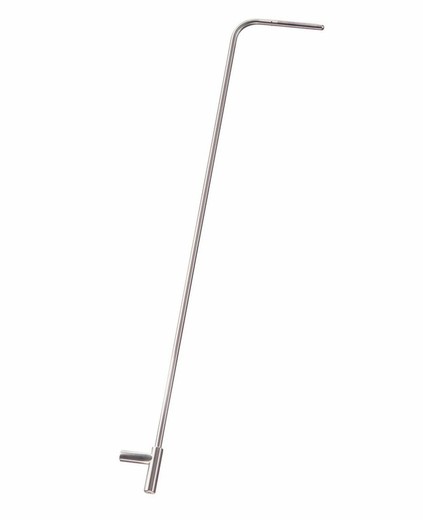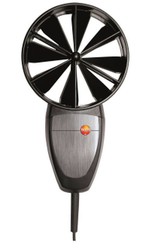Pitto tube 350mm Testo
Brand: Testo
Reference: 6352145
€149.68
Product sold out, not available at this time.
Next stock entry on the way, expected
Description
The Pitot tube is used to calculate the integral pressure, or also called stagnation pressure, remaining pressure or backwater pressure and is equal to the sum of the static pressure and the dynamic pressure. The TESTO 350mm long Pitot tube is made of stainless steel and is used for speed measurement. in conjunction with pressure probes 0638 1347/0638 1547 or TESTO 521 with an internal sensor.
Details
More information
The Pitot tube has a circular area, usually bent in L. It consists of a tube of a rather small diameter with a indentation in its front part, which is conditioned against a current or flow so that its central axis is in parallel. to the direction of the current so that the current collides head-on into the hole in the tube. It is in the slot where the total pressure is recorded and transferred to the pressure probe connection. Static pressure is registered through lateral grooves and leads to the connection. The resulting differential pressure is called dynamic pressure and is dependent on speed. Like thermal probes, the Pitot tube responds to turbulent fluids better than that of a vane probe, which is why an undisturbed fluid inlet and outlet path should be chosen when recording with the Pitot tube. . . The accessories used for the Pitot tube are: a silicone connection hose, 5 m long, the maximum load of 700hPa (mbar) and a silicone-free connection tube to measure the differential pressure, 5m, maximum pressure 700hPa (mbar).
Dependencies
-Density.
-Temperature.
-Humidity.
-Absolute pressure.
General Technical Information
Operating temperature from 32.0º to 112.0ºF / from 0 to + 600º C
Length 13.8 in / 350 mm
Diameter 0.3 in / 7 mm
Pitot tube factor 1
Measurement range +197 to + 19685 fp / + 1 to +100 m / s
The Pitot tube has a circular area, usually bent in L. It consists of a tube of a rather small diameter with a indentation in its front part, which is conditioned against a current or flow so that its central axis is in parallel. to the direction of the current so that the current collides head-on into the hole in the tube. It is in the slot where the total pressure is recorded and transferred to the pressure probe connection. Static pressure is registered through lateral grooves and leads to the connection. The resulting differential pressure is called dynamic pressure and is dependent on speed. Like thermal probes, the Pitot tube responds to turbulent fluids better than that of a vane probe, which is why an undisturbed fluid inlet and outlet path should be chosen when recording with the Pitot tube. . . The accessories used for the Pitot tube are: a silicone connection hose, 5 m long, the maximum load of 700hPa (mbar) and a silicone-free connection tube to measure the differential pressure, 5m, maximum pressure 700hPa (mbar).
Dependencies
-Density.
-Temperature.
-Humidity.
-Absolute pressure.
General Technical Information
Operating temperature from 32.0º to 112.0ºF / from 0 to + 600º C
Length 13.8 in / 350 mm
Diameter 0.3 in / 7 mm
Pitot tube factor 1
Measurement range +197 to + 19685 fp / + 1 to +100 m / s
Comments
There are no opinions yet Be the first to review!
Questions
No questions yet Do you have any doubt?
Best price
Have you seen it cheaper?

